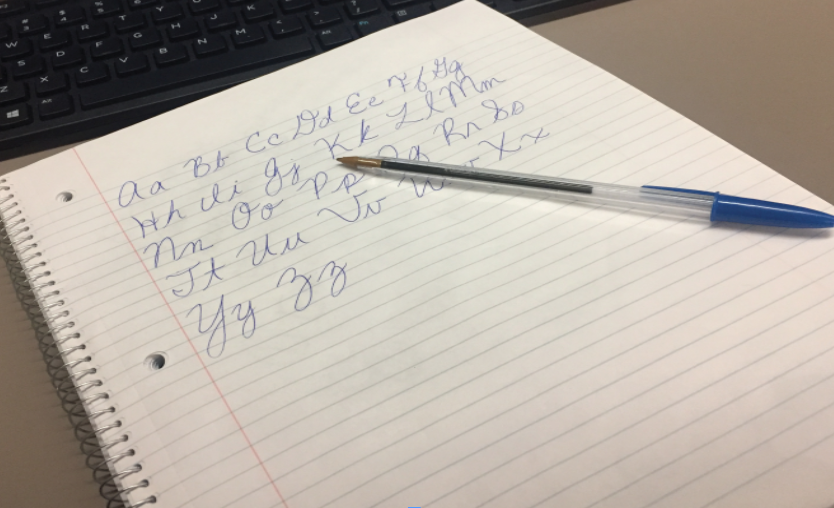
Ayanna Totten
Staff Writer
As the blood rushes to your fingertips, your young hand grips a no. 2 Ticonderoga pencil and shakily traces the endless lines of a cursive worksheet.
Slowly but surely, you improve.
And eventually, you realize whether your signature’s a doctor’s scribble or an autograph-worthy maze of loops and tails, it’s yours.
Unfortunately, modern curriculums might deprive students of this rite of passage.
When the Common Core State Standards launched in 2009, learning cursive was no longer a requirement.
The Common Core was designed to ensure learning goals were consistent nationwide, therefore preparing all students to graduate high school and succeed in college and beyond.
Instead, states have the option to decide whether cursive will be included in their curriculum(s).
According to the Southern Regional Education Board’s cursive writing requirements, many Southern states have opted to keep cursive in the classroom.
States, such as Alabama, Arkansas, Louisiana, North Carolina, and South Carolina, have statutes that require students to learn cursive by the end of third or fifth grade.
Other states, including Florida, Georgia, and Oklahoma, require cursive through state standards that introduce the skill by third grade as well.
The Pennsylvania Department of Education’s academic standards for English Language and Arts don’t address handwriting, but individual districts incorporate cursive into their curriculums.
For example, East Stroudsburg Area School District begins cursive instruction in the second grade.
For faculty and students alike, cursive is a matter of speed and personal aesthetic.
“I think cursive, while arguably outdated and underused, is an essential and classical art form that all writers should know.
It reflects a refined ability to craft the written word and while seemingly minor to many, it is a necessity for actual signatures,” said English professor Dr. Laura Kieselbach.
“For me, it is quicker, and, in my opinion, it just looks nicer.
Personally, my own children want to write in cursive – they think it’s ‘neat’ and grown-up!
So, yes, kids should learn it. Then they have the option to use it or not, but I definitely still see it as a staple of learning to write,” she continued.
“I went to a Catholic school, and we started writing in cursive in second grade. I think every student should learn how to write in cursive because it often helps me write faster when I’m taking notes. I also turn to cursive when I want to write neater because my print is often sloppy and harder to read,” said Senior Madison Vicendese.
Senior Quincy Palmer offered an opposing view.
“I vaguely know how to write in cursive now,” he said. “I never really needed to use it in my daily life since learning cursive in the third grade.
At this point, I don’t see it as practical to teach that [cursive] in the classroom.
I think a class for filing taxes or paying bills and loans would be 30 times more beneficial.”
Supporting the notion that cursive is an antiquated craft, Pennsylvania Core Standards have a strong emphasis on technology and typing.
Students explore “digital tools to produce and publish writing” as early as kindergarten, and they are expected to “demonstrate sufficient command of keyboarding skills to type a minimum of one page in a single sitting” by grade four.
However, cursive is actually crucial to cognitive development.
According to Psychology Today, cursive allows the brain to develop “functional specialization” that combines sensation, thinking, and movement. Practice, concentration and fine motor control are needed to learn cursive, all of which activate parts of the brain that keyboarding doesn’t.
In other words: cursive matters.
It seems the nation’s education system is depending on states to determine whether cursive is still a valuable life skill.
While the digital age may bring the seemingly everlasting legacy of pen and paper into question, educators and their pupils must remember to keep some of the old as they embrace the new.
Email Ayanna at:
atotten@live.esu.edu

